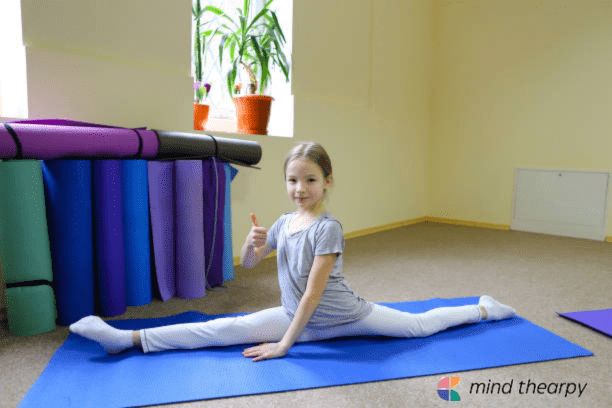Introduction
Yoga is an ancient practice that has gained global popularity for its numerous physical, intellectual, and non-secular benefits. It originated in India over 5000 years ago and has grown to be a popular exercise and rest form. Yoga combines physical postures, respiratory techniques, and meditation to sell well-being
What Is Yoga in Physical Education?
Yoga performs a critical role in bodily schooling as it complements flexibility, energy, patience, and intellectual focus. It isn’t always only a form of workout but a holistic technique to a healthy life-style. Physical schooling programs internationally have commenced incorporating yoga to help students improve their posture, awareness, and normal fitness.
Benefits of Yoga in Physical Education
- Improves Flexibility and Strength
- Yoga involves quite a few postures (asanas) that extend and reinforce muscle tissue, enhancing flexibility and decreasing the chance of injuries.
- Enhances Balance and Coordination
- Practicing yoga regularly improves frame focus, stability, and coordination, that are vital for physical sports and sports.
- Boosts Concentration and Focus
- The respiration, physical activities, and meditation components of yoga enhance mental clarity, leading to better attention and educational performance.
- Reduces Stress and Anxiety
- Yoga facilitates in calming the thoughts, reducing pressure levels, and promoting relaxation, that’s useful for college kids managing educational pressure.
- Encourages a Healthy Lifestyle
- Regular yoga exercise promotes universal nicely-being and encourages people to undertake a healthful way of life, along with right nutrients and self-care.
- Increases Stamina and Endurance
- Certain yoga postures and sequences, together with Surya Namaskar (Sun Salutation), help construct endurance and stamina, making it easier for college students to carry out physical activities with higher power levels.
Yoga Postures for Physical Education
Several yoga postures are commonly included in physical education programs. These asanas help in achieving various fitness goals:
- Tadasana (Mountain Pose): Improves posture and balance.
- Vrikshasana (Tree Pose): Enhances concentration and leg strength.
- Bhujangasana (Cobra Pose): Strengthens the spine and relieves stress.
- Paschimottanasana (Seated Forward Bend): Stretches the back and hamstrings.
- Savasana (Corpse Pose): Promotes relaxation and mental peace.
- Dhanurasana (Bow Pose): Improves flexibility and strengthens the back muscles.
- Adho Mukha Svanasana (Downward-Facing Dog): Helps in full-body stretching and increases blood circulation.
About Yoga in English
Yoga is derived from the Sanskrit word “Yuj,” which means union. It signifies the connection between mind, body, and soul. There are various forms of yoga, each catering to different needs and preferences.
Different Types of Yoga
- Hatha Yoga
- A foundational practice that focuses on physical postures and breathing techniques.
- Ashtanga Yoga
- A dynamic and physically demanding style involving a series of progressive postures.
- Vinyasa Yoga
- A flow-based practice where movements are synchronized with breath.
- Bikram Yoga
- A form of hot yoga performed in a heated room to detoxify the body.
- Kundalini Yoga
- Focuses on spiritual awakening through meditation, chanting, and breathing exercises.
- Yin Yoga
- A slow-paced style that targets deep connective tissues and improves flexibility.
- Restorative Yoga
- A gentle form of yoga that uses props to support the body in relaxation postures.
- Power Yoga
- A fitness-based practice that builds strength and stamina.
Importance of Yoga in Daily Life
- Promotes Physical Health: Enhances strength, endurance, and flexibility.
- Supports Mental Well-being: Reduces anxiety, stress, and depression.
- Encourages Self-Awareness: Helps in understanding oneself better and managing emotions.
- Improves Sleep Quality: Regular practice leads to better sleep patterns and relaxation.
- Strengthens Immunity: Yoga postures and breathing exercises improve overall immunity and help in preventing diseases.
- Aids in Weight Management: Certain yoga styles, such as Vinyasa and Power Yoga, help in burning calories and maintaining a healthy weight.
How to Start Practicing Yoga
For beginners, starting with simple postures and breathing exercises is essential. Here are a few steps to begin your yoga journey:
- Choose a Quiet Space: A peaceful environment helps in better focus and relaxation.
- Wear Comfortable Clothing: Loose and breathable clothes allow free movement.
- Start with Basic Asanas: Begin with simple poses like Tadasana, Sukhasana (Easy Pose), and Balasana (Child’s Pose).
- Practice Breathing Techniques: Deep breathing exercises such as Anulom Vilom (Alternate Nostril Breathing) can help in calming the mind.
- Follow a Consistent Routine: Practicing yoga daily for at least 20–30 minutes can bring significant benefits.
- Stay Hydrated: Drinking water before and after the session helps in maintaining hydration levels.
Common Misconceptions About Yoga
- Yoga is Only for Flexible People
- Anyone can practice yoga, regardless of flexibility levels. Over time, yoga enhances flexibility.
- Yoga is a Religious Practice
- While yoga has spiritual aspects, it is not tied to any specific religion and is widely practiced by people of different faiths.
- Yoga Takes Too Much Time
- Even 10–15 minutes of daily yoga can yield positive results.
- Yoga is Only for Women
- Yoga is beneficial for everyone, regardless of age or gender.
Conclusion
Yoga holds great value as an essential part of physical education and everyday existence. The practice results in better physical health that combines with improved mental and emotional well-being. We obtain a balanced life of harmony by making yoga a part of our daily routine. Getting involved in yoga practice delivers essential advantages for health and total well-being no matter what stage of life you currently occupy. Accept yoga as a lifelong practice to allow its deep positive influence to touch your body and soul and control your mental state.
To practice yoga means to embark on a path which leads you toward deeper self-understanding and complete mental tranquility. Practicing yoga helps people develop mindfulness together with compassion and strengthening their internal self-understanding. The modern demanding lifestyle leads people toward yoga because this practice creates a peaceful escape while balancing body and mind. Regular practice of yoga will lead you to reach both physical and mental wellness.




Wugf qhyjj Hrae KisrgUt